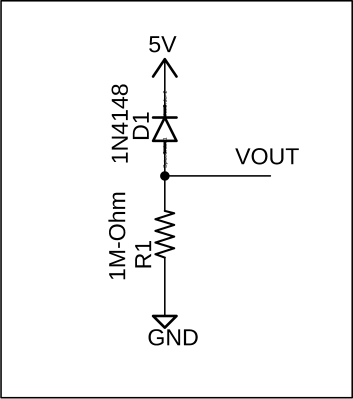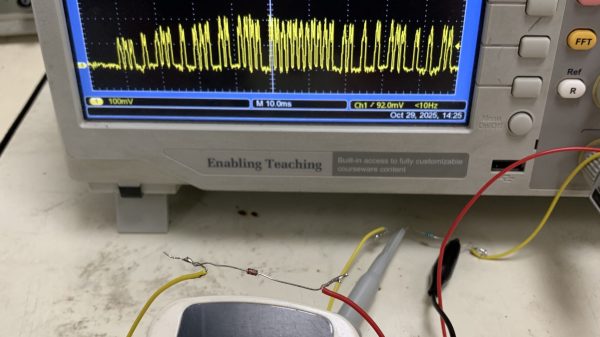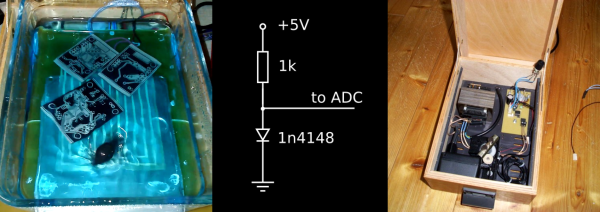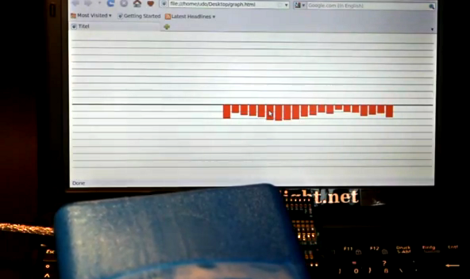[Dhananjay Gadre] happened across a useful little trick the other day. Take any old 1N4148 or 1N914 glass-package signal diode and wire it up right, and you’ve got yourself a nifty little IR detector.

The trick is to treat the diode just like you would a proper IR photodiode. The part should be reverse biased with a resistor inline, and the signal taken from the anode side. Point an IR remote at your little diode and you’ll readily see the modulated signal pop up on a scope, clear as day.
The phenomenon is discussed at length over on Stack Exchange. Indeed, it’s a simple fact that most semiconductor devices are subject to some sort of photoelectric effect or another. It’s just that we stick the majority of them in opaque black packages so it never comes up in practice. In reality, things like photodiodes and phototransistors aren’t especially different from the regular parts—they’re just put in transparent packages and engineered and calibrated to give predictable responses when used in such a way.
Is this the way you’d go if your project needed an IR detector? Probably not—you’d be better served buying the specific parts you need from the outset. But, if you find yourself in a pinch, and you really need to detect some IR signals and all you’ve got on hand is glass-package signal diodes? Yeah, you can probably get it to work.
While this trick is well known to many oldheads, it’s often a lightbulb moment for many up-and-coming engineers and makers to realize this. Glass-packaged diodes aren’t the only light-sensitive parts out there, either. As we’ve explored previously, certain revisions of Raspberry Pi would reboot if exposed to a camera flash, while you can even use regular old LEDs as sensors if you’re so inclined. If you’ve got your own secret knowledge about how to repurpose regular components in weird ways, don’t hesitate to notify the tipsline!












